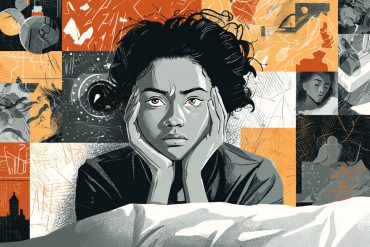Summary: Non-binary and transgender people have a higher risk of autism, a new study reports. The risk is significantly higher for those who were assigned the female gender at birth.
Source: Anglia Ruskin University
New research indicates that transgender and non-binary individuals are significantly more likely to have autism or display autistic traits than the wider population – a finding that has important implications for gender confirmation treatments.
The study, led by Dr. Steven Stagg of Anglia Ruskin University (ARU) and published in the journal European Psychiatry, is one of the first pieces of research to focus on people who identify as non-binary.
It found that 14% of the transgender and non-binary group had a diagnosis of autism, while a further 28% of this group reached the cut-off point for an autism diagnosis, suggesting a high number of potentially undiagnosed individuals.
These figures were primarily driven by high scoring amongst those whose assigned gender was female at birth, supporting recent evidence that there is a large population of undiagnosed women with an autism spectrum disorder.
The authors also found higher levels of systematizing (a tendency to analyze, control and use rule-based systems) and lower levels of empathy amongst the transgender and non-binary group, characteristics often found in individuals with an autism spectrum disorder.
The study of 177 people reported an autism diagnosis of 4% for the cisgender group (those whose gender identity matches their gender at birth). This is higher than previously reported estimates for the wider population and the authors believe self-selection for the study could be responsible.
Dr. Stagg, Senior Lecturer in Psychology at Anglia Ruskin (ARU), said: “We found that a significant proportion of the transgender and non-binary group either had a diagnosis of autism or displayed autistic traits, including difficulty in empathizing and an overreliance on systematic, rule-based reasoning.
“One of the striking findings was the number of individuals born female who met the cut off for autism spectrum disorder. This is particularly important given that individuals born female are twice as likely to be referred to gender identity clinics.”
“Problems interpreting social signals, a literal understanding of language and difficulty recognizing and interpreting one’s own emotions could mean that individuals struggle with therapeutic interventions.”
“People with autism are also more likely to seek unequivocal answers to the complex issues surrounding gender identity. Our study suggests it is important that gender identity clinics screen patients for autism spectrum disorders and adapt their consultation process and therapy accordingly.”
Source:
Anglia Ruskin University
Media Contacts:
Jon Green – Anglia Ruskin University
Image Source:
The image is in the public domain.
Original Research: Closed access
“Autistic traits in individuals self-defining as transgender or nonbinary”. Steven D. Stagg, Jaime Vincent.
European Psychiatry. doi:10.1016/j.eurpsy.2019.06.003
Abstract
Autistic traits in individuals self-defining as transgender or nonbinary
Background
Autism spectrum traits are increasingly being reported in individuals who identify as transgender, and the presence of such traits have implications for clinical support. To-date little is known about autism traits in individuals who identify as nonbinary.
Aims
To empirically contribute to current research by examining autistic traits in a self-identifying transgender and nonbinary gender group.
Method
One hundred and seventy-seven participants responded to a survey consisting of the Autism Spectrum Quotient (AQ), the Empathy Quotient (EQ), the Systematising Quotient (SQ) and the Reading the Mind in the Eyes Task (RME). Comparisons were made between cisgender, transgender and nonbinary groups.
Results
Individuals with autism spectrum disorder (ASD) or meeting the AQ cut-off score for ASD were over-represented in both the transgender and nonbinary groups. The key variables differentiating the transgender and nonbinary groups from the cisgender group were systematizing and empathy. Levels of autistic traits and cases of ASD were higher in individuals assigned female at birth than those assigned male at birth.
Conclusions
A proportion of individuals seeking help and advice about gender identity will also present autistic traits and in some cases undiagnosed autism. Lower levels of empathy, a diminished theory of mind ability and literalness may impede the delivery of effective support. Clinicians treating transgender and nonbinary individuals should also consider whether clients, especially those assigned female at birth, have an undiagnosed ASD.







